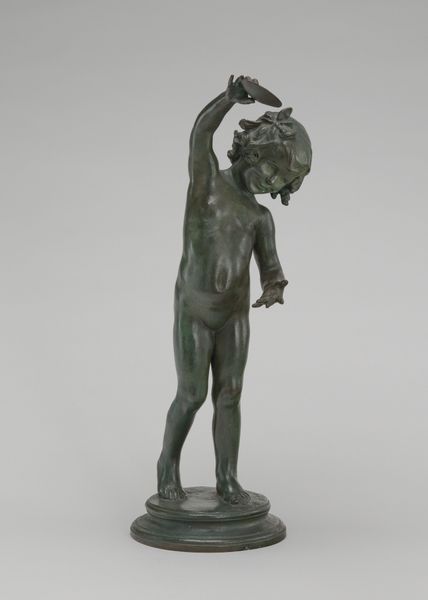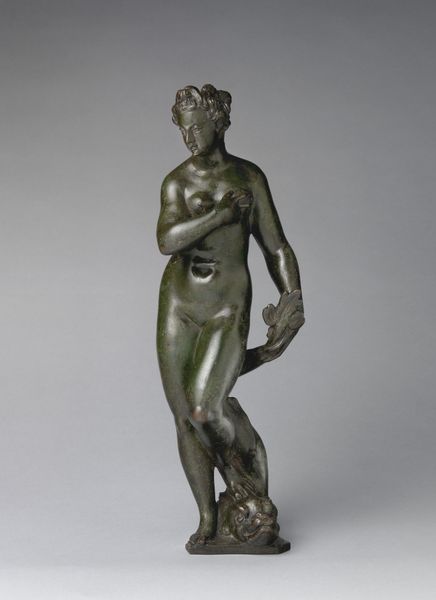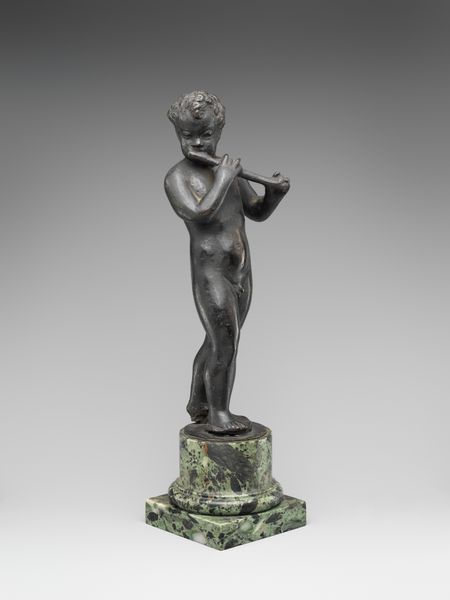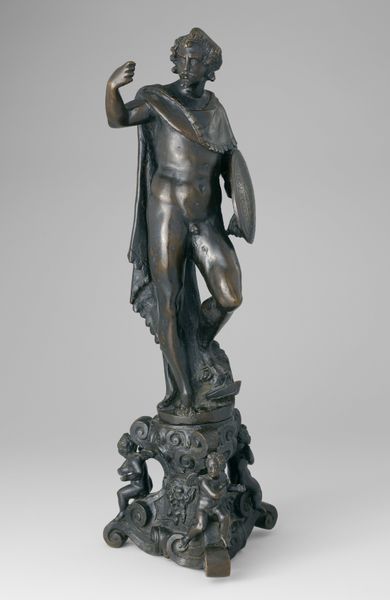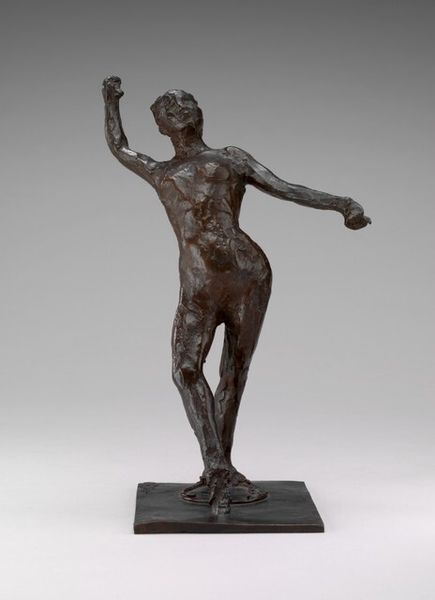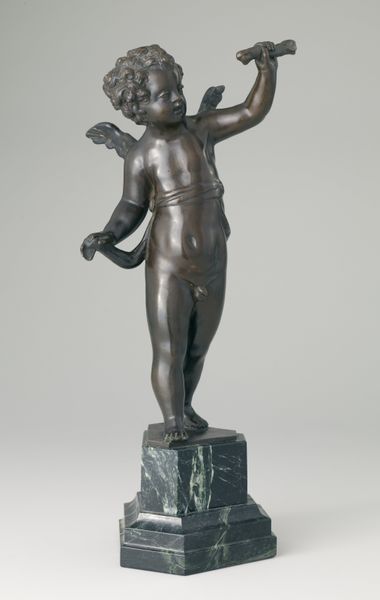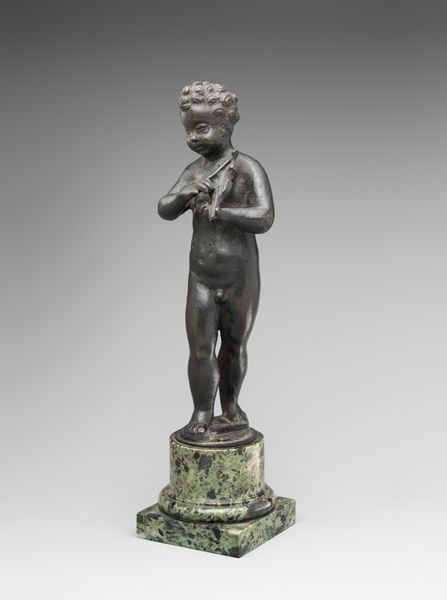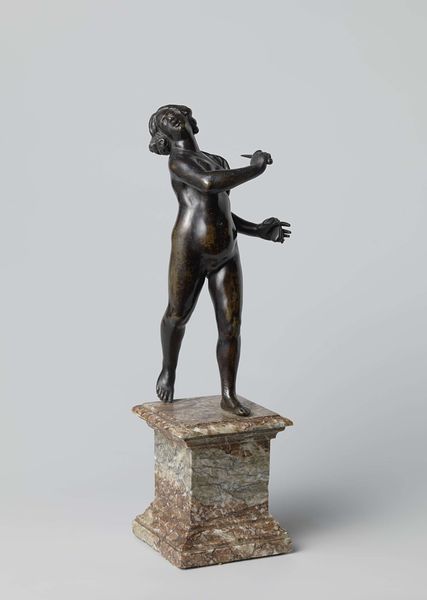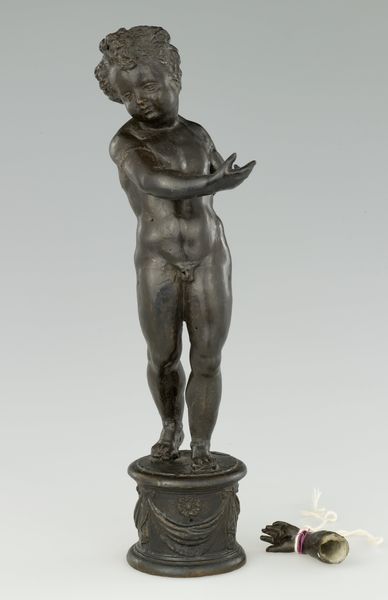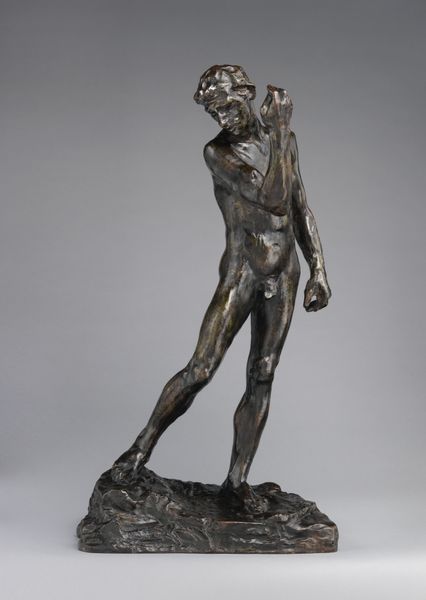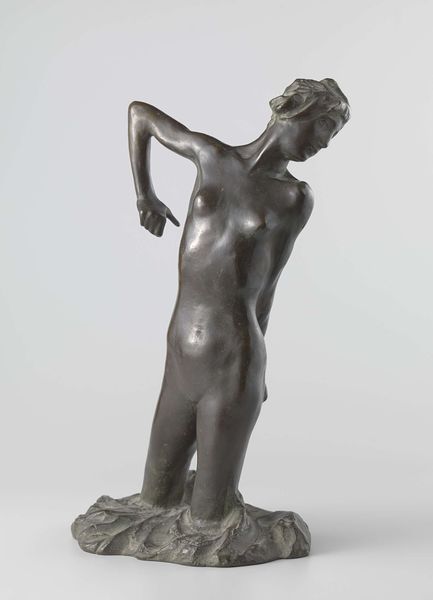
bronze, sculpture
#
bronze
#
figuration
#
sculpture
#
academic-art
#
nude
#
realism
Dimensions: overall: 73.66 × 40.64 × 17.78 cm, 23 lb. (29 × 16 × 7 in., 10.433 kg)
Copyright: National Gallery of Art: CC0 1.0
Editor: Here we have Bessie Potter Vonnoh's "Water Lilies," crafted in bronze in 1913. It's a beautiful sculpture; there’s a sense of serene poise in the figure's stance. What do you see in this piece? Curator: I'm struck by the formal elements: the artist's skillful manipulation of bronze to achieve a smooth, almost luminous surface on the figure juxtaposed with the rougher texture of the base. It generates a satisfying interplay. The lines of the figure, the gentle curve of the spine, and the delicate extension of the arms create a balanced composition. The work seems to invite contemplation of form and texture. Editor: It's interesting that you focus on the texture, because I hadn't really noticed that initially. Do you see any tension created by these formal choices? Curator: Precisely. The figure stands on what seems to be a roughly hewn rock, and this contrast in surface quality—smooth and rough, light and dark—creates a tactile experience before one even considers subject matter. It generates interest, as the viewer is drawn to this tension, to the interplay of opposing textures. Furthermore, note the subtle shift in the bronze itself: the light gathers differently depending on how each section is carved. How would you relate those textures to its narrative of "Water Lilies"? Editor: Well, the contrast between the smoothness of the figure's skin and the roughness of the rock could represent the transition between the human world and the natural world, perhaps. That the sculpture feels like the perfect capture of a fleeting, serene moment. Curator: Indeed. A certain grace is conveyed through form itself. Editor: I’ve certainly learned a new appreciation for this statue just by considering the formal choices the artist made.
Comments
No comments
Be the first to comment and join the conversation on the ultimate creative platform.
